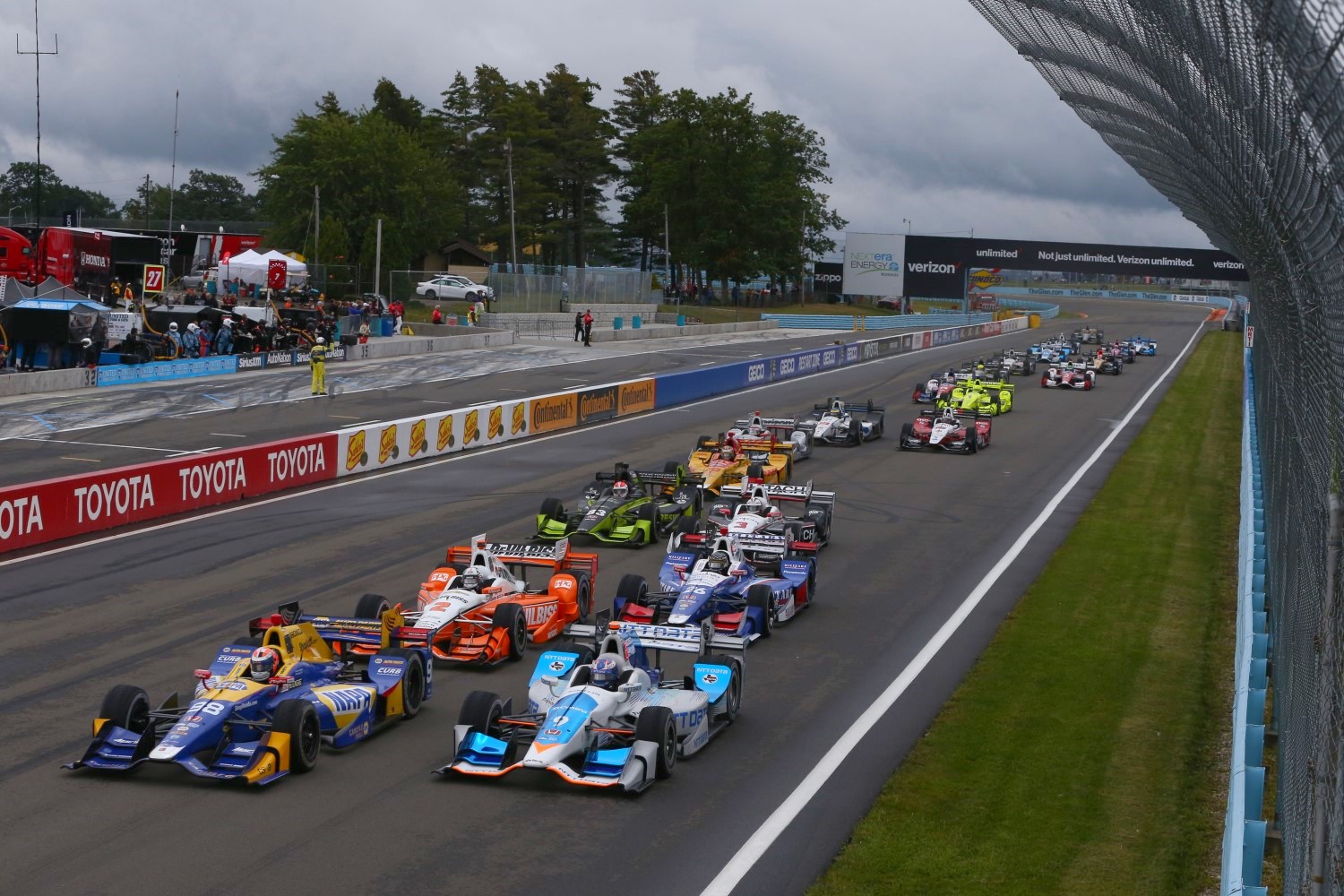IndyCar to eliminate push-to-pass
 |
| On some circuits there will be 0.0000 passes if P2P is eliminated |
IndyCar’s push-to-pass system has been a source of great debate among drivers, teams and fans since its implementation in 2012.
Does allowing drivers to have a temporary boost in horsepower really help generate more passing? Should it only be used as an offensive weapon? Is it too gimmicky?
IndyCar President of Competition Jay Frye has wrestled with all of these questions, but can foresee a day where those debates might all be muted. That’s because he can envision a time when push to pass is obsolete.
Encouraged by what he’s seen out of the 2018 Indy car in its initial paces, Frye said if all goes to plan in the next couple of years, push to pass could be rendered unnecessary.
“Maybe even sooner than that," Frye told IndyStar recently. “It’s supposed to be a tool drivers can use, but if it won’t have the same effect that it has now, then why do it? We’ll certainly look at that. And that would eliminate a lot of debate."
The idea excites some drivers, including reigning Indianapolis 500 winner Takuma Sato, who treasures the idea.
“That would be proper racing," Sato said.
Among the biggest reasons Frye believes the push-to-pass era could end is that the 2018 Indy car has proved to accelerate differently and generates less drag than the current iteration. Along with the data Frye has examined, test drivers Oriol Servia and Juan Pablo Montoya have reported that the car has more pickup, is faster down straightaways and slower in corners.
Part of IndyCar’s five-year plan is to give drivers more horsepower and, combined with the benefits of the new car, Frye envisions a future where drivers wouldn’t need a boost to make a pass.
“If you have more horsepower and different braking zones and the car was faster down the straightaways, you might have the same type of opportunity to pass as you do now," Frye said. "But it wouldn’t be a push-to-defend type thing (where the race leader uses it to keep from being passed). It would be who drives it further into the corner and makes it stick when it’s in the corner."
Frye doesn’t have a specific time frame in mind for when this might occur, but said that the issue will be studied throughout the remainder of the new car’s testing as well as throughout its debut season season.
For now, though, Frye is pleased with the evolution of push to pass. Over the past five years, it has undergone many changes, but Frye believes the current form is the best yet.
The boost provides more horsepower than ever, and drivers are allotted a set amount — between 150 and 200 seconds — that offers more autonomy, rather than in the past when drivers had a certain number of pushes.
Of course, the current system has its detractors. IndyCar champion and Team Penske star Will Power has been among the most vocal about tweaking how it is used, but there are many who side with Frye, saying it provides intriguing gamesmanship.
“I’m happy with where we are on push-to-pass," Marco Andretti said. “I think it’s really good. There’s strategy involved about conserving it and figuring out when you want to use it."
Frye said he is always open to suggestions and will investigate improving the system, but at the end of the day, eliminating it altogether is the simplest, cleanest option.
“I really think from '16 to ‘17, we’ve really made a good gain," Frye said. “I think the drivers like where we’re at. It’s gone well so far. But is this a product we’ll need long term or not? There’s substantial data from the new car to suggest we might not." Jim Ayello/IndyStar
